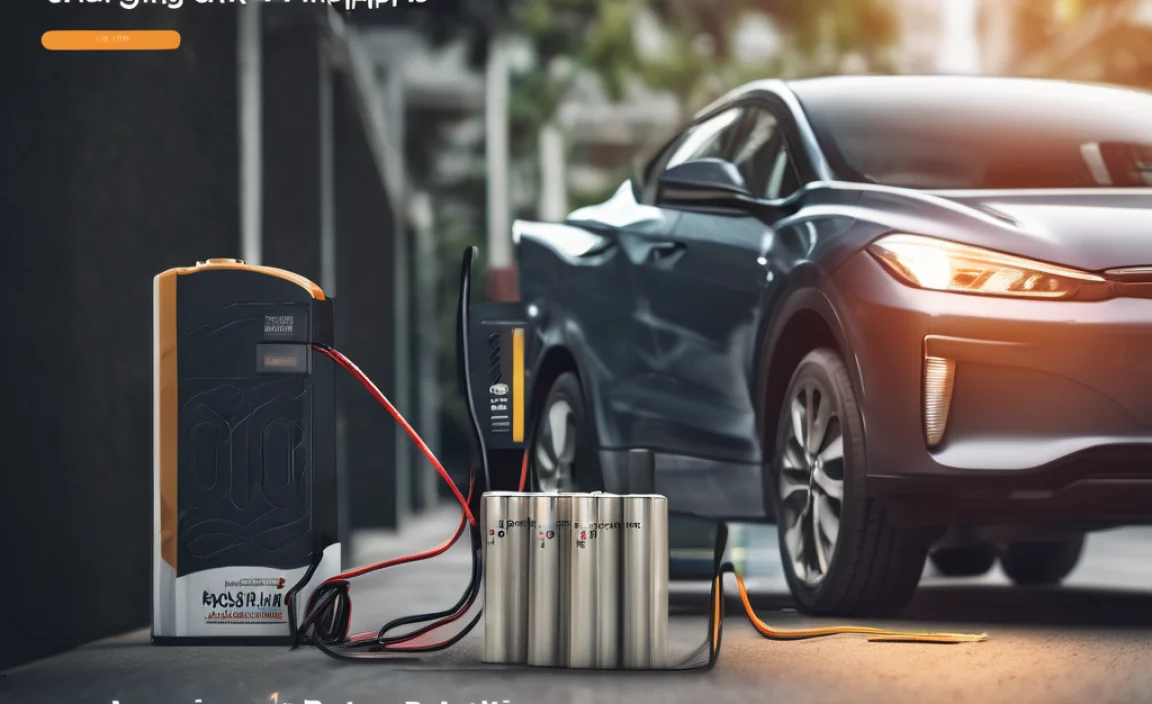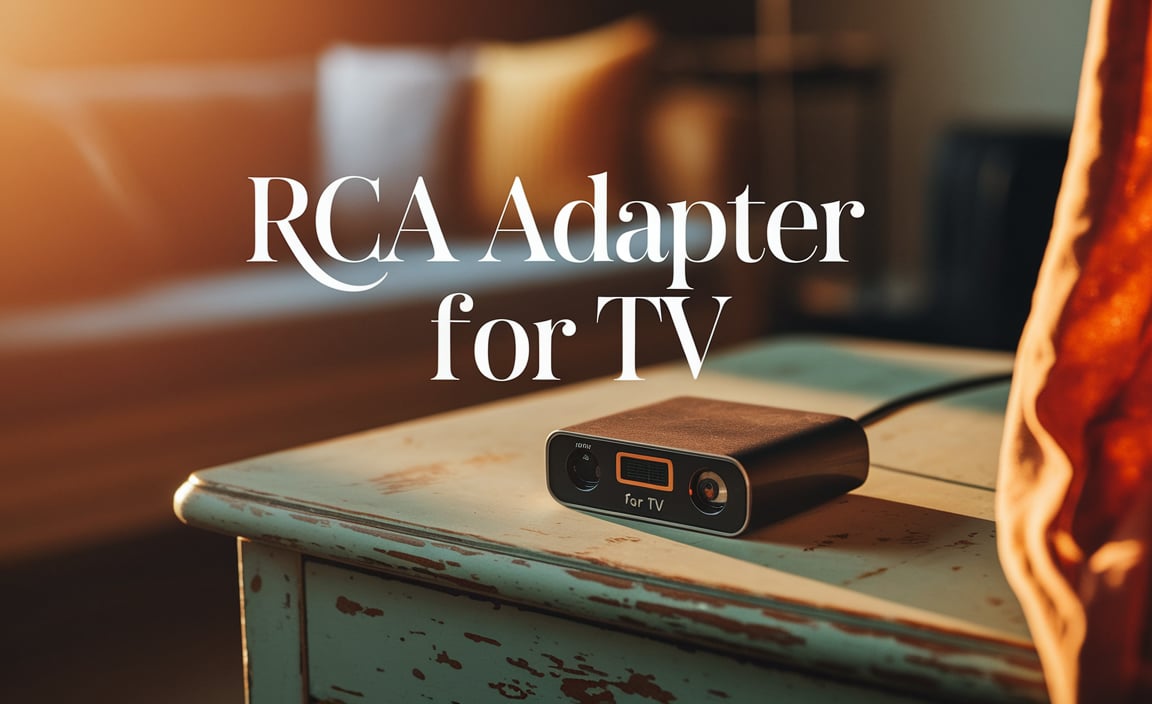Need to plug your favorite headphones into your iPhone but can’t find the right connection? An Apple adapter for earphones is your simple solution! It bridges the gap between your headphone’s standard audio jack and your iPhone’s lightning port, letting you enjoy your music or calls without missing a beat. This guide will walk you through everything you need to know to get connected.
Hey there! Roy Walker here, and if you’ve ever picked up your iPhone, ready to listen to your favorite tunes or take an important call, only to realize your trusty headphones won’t plug in, you’re not alone. It’s a common hitch, especially with newer iPhones that don’t have a traditional headphone jack anymore. It can be a bit of a head-scratcher, right? But don’t worry, solving this is much easier than you think. We’re going to break down exactly what you need and how to use an Apple adapter for earphones to get you listening in no time. Stick with me, and we’ll have you all set up in a jiffy.
What is an Apple Adapter for Earphones?
Simply put, an Apple adapter for earphones is small gadget that acts like a translator for your audio. iPhones, starting with the iPhone 7, did away with the familiar round headphone jack. Instead, they use the Lightning port, which is the same port you use for charging. Your old headphones, the ones with the classic 3.5mm audio plug, won’t fit directly into this port.
That’s where the adapter comes in. It has a Lightning connector on one end that plugs into your iPhone and a standard 3.5mm female audio jack on the other end. This female jack is where you plug in the cable from your regular, wired headphones.
Why Did Apple Make This Change?
You might be wondering why Apple decided to remove the headphone jack. They’ve explained that it was to make their iPhones thinner and create more space inside for other components, like a larger battery or improved speakers. It also helped pave the way for wireless audio solutions like AirPods.
While some people miss the old jack, the adapter provides a straightforward way to keep using your existing, high-quality wired headphones. It preserves the audio quality you’re used to without forcing everyone to switch to an entirely new headphone set.
Types of Apple Adapters for Earphones
When you’re looking for an Apple adapter for earphones, you’ll primarily encounter two main types. Each serves the same core purpose but has slight differences that might matter depending on your needs. Let’s break them down:
1. The Lightning to 3.5mm Headphone Jack Adapter (The Most Common)
This is the adapter most people think of and need. It’s a small, white dongle that’s typically included with iPhones that lack a headphone jack (though this has become less common in recent years). If you bought a new iPhone and it didn’t come with one, or yours got lost, this is the one you’ll need to buy.
Key Features:
- Plug and Play: It’s incredibly simple to use. Just plug the Lightning end into your iPhone and your headphone cable into the 3.5mm jack.
- Audio Quality: It’s designed by Apple to maintain the audio quality of your music and calls.
- Compact Size: It’s small and lightweight, making it easy to carry in your pocket, bag, or even on your keychain.
- Compatibility: Works with any device that has a Lightning port and supports audio output. This includes most iPhones, iPads, and iPod touches.
You can usually find these directly from Apple or from reputable third-party accessory makers. Apple’s official adapter is generally reliable, but third-party options can sometimes be more affordable. Just be sure to check that they are “Made for iPhone” (MFi) certified, which means they’ve been approved by Apple to meet their standards.
2. The Lightning to 3.5mm Headphone Jack Adapter with a Charging Port
This is a slightly more advanced version of the basic adapter. It looks similar, but it has not just a 3.5mm headphone jack but also an additional Lightning port. This is super handy because you can plug in your headphones and charge your iPhone at the same time.
Key Features:
- Dual Functionality: Listen to music and charge your phone simultaneously. This is a lifesaver on long journeys or when your battery is low.
- Convenience: No more choosing between listening to audio and keeping your iPhone powered up.
- Slightly Bulkier: Compared to the basic adapter, it’s a bit larger due to the extra port.
- Variety of Designs: These come from various manufacturers, sometimes in different shapes like small hubs or even headphone splitters that allow two sets of headphones to be plugged in.
These are particularly useful if you use wired headphones for extended periods, like during workouts, flights, or gaming sessions, where battery life is a concern.
How to Use Your Apple Adapter for Earphones: A Step-by-Step Guide
Using an Apple adapter for earphones is about as straightforward as it gets. You don’t need any technical skills, just a few seconds to plug everything in. Here’s how you do it:
Step 1: Identify Your iPhone’s Port
First, take a look at the bottom of your iPhone. You’ll see the small, oval-shaped Lightning port. This is where you’ll plug in the adapter. If your iPhone has a larger, rectangular port, it’s likely a USB-C port (found on some iPads and newer iPhone models), and you would need a different type of adapter.
Step 2: Connect the Adapter to Your iPhone
Take your Apple adapter for earphones. On one end, you’ll see a small connector meant to plug into your iPhone. This is usually a Lightning connector. Gently insert this end into the Lightning port on your iPhone. You should feel it click or settle snugly into place. Make sure it’s fully inserted.
Safety Tip: Never force the connector. If it doesn’t go in easily, double-check you have the right adapter for your iPhone model and that the port is clear of any debris. Trying to force it can damage both the adapter and your iPhone.
Step 3: Connect Your Headphones to the Adapter
Now, take the audio cable from your wired headphones. This cable will have a standard 3.5mm plug on the end – that’s the round metal pin. Find the corresponding 3.5mm port on the other end of the adapter. It looks like a smaller, round hole. Insert the headphone plug firmly into this port until it’s secure.
Step 4: Enjoy Your Audio!
That’s it! Your iPhone is now connected to your headphones through the adapter. You can start playing music, watch a video, or make a call, and the sound should come through your headphones. If you’re using an adapter with a charging port, you can plug your charging cable into that port to power up your iPhone simultaneously.
Troubleshooting Tip: If you don’t hear any sound, unplug both the adapter and your headphones, then plug them back in, ensuring a firm connection each time. Sometimes, simply restarting your iPhone can also resolve temporary connection issues. Check your iPhone’s volume settings too!
Compatibility and What to Look For
When buying an Apple adapter for earphones, knowing what works with your device is key. Apple designs these accessories to work seamlessly with its own products, but there are a few things to keep in mind to avoid confusion and ensure you get the right one.
iPhone Models That Use Adapters
The need for an adapter primarily affects iPhones that removed the 3.5mm headphone jack. Here’s a general guide:
- iPhone 7 and 7 Plus: The first models to remove the headphone jack.
- iPhone 8, 8 Plus, and iPhone X: All continued without a headphone jack.
- iPhone XS, XS Max, iPhone XR: Continued the trend.
- iPhone 11 series, iPhone 12 series, iPhone 13 series, iPhone 14 series: These also rely on Lightning for wired audio or wireless options.
- iPhone 15 series: These newer iPhones use a USB-C port, not Lightning. If you have an iPhone 15 or later, you’ll need a USB-C to 3.5mm headphone jack adapter.
Important Note: Always check the specific model of your iPhone. If you’re unsure, a quick search for “[Your iPhone Model] headphone jack” will confirm whether you need an adapter and which type.
“Made for iPhone” (MFi) Certification
This is a big one, especially if you’re looking at third-party adapters. MFi certification is a licensing program that Apple created for developers of hardware accessories and software for Apple products. When an accessory is MFi certified, it means Apple has tested it and found it meets their performance and safety standards.
Why MFi Matters:
- Reliability: MFi adapters are more likely to work consistently and without glitches.
- Performance: They are built to deliver optimal audio quality and ensure features like microphone support and remote controls (volume up/down, play/pause) work correctly.
- Safety: They meet Apple’s safety standards, reducing the risk of damage to your device.
You’ll usually see the MFi logo on the product packaging or description if it’s certified. While uncertified adapters might be cheaper, they can sometimes cause problems, such as poor sound quality, unexpected disconnections, or even damage your iPhone.
Using Your Existing Headphones
The beauty of the Apple adapter is its backward compatibility with your favorite wired headphones. Whether they have a standard 3.5mm jack, your adapter will let you use them. This means you don’t have to buy new headphones just because your new phone has a different port.
This includes:
- Standard Earbuds: Those basic wired earbuds that came with older phones.
- Tougher Headphones: Over-ear or on-ear headphones with a 3.5mm plug, often used for better sound quality or noise isolation.
- Studio Headphones: Professional-grade headphones with a standard audio jack.
If your headphones have a slightly different connector, like a quarter-inch (5mm) jack used for pro audio gear, you might need an additional adapter to go from 3.5mm to that size. But for most everyday headphones, the MFi-certified Apple adapter will be all you need.
Comparing Adapters: Apple Official vs. Third-Party
When it comes to choosing an Apple adapter for earphones, you have a couple of routes: buying directly from Apple or opting for a third-party accessory. Both have their pros and cons, and the best choice often depends on your budget and priorities.
Apple Official Adapters
Pros:
- Guaranteed Compatibility: Always works perfectly with your iPhone/iPad as it’s made by Apple.
- Reliable Performance: Engineered to Apple’s high standards for sound quality and durability.
- MFi Certified: You know it’s been tested and approved by Apple.
- Simple Design: Usually straightforward, no-fuss functionality.
Cons:
- Higher Cost: Often more expensive than third-party options.
- Limited Features: The basic adapter doesn’t allow simultaneous charging.
Third-Party Adapters
Pros:
- More Affordable: Generally cheaper, saving you money.
- Variety of Features: Many offer dual functionality (charging port), different colors, or even built-in DACs (Digital-to-Analog Converters) for potentially better sound processing.
- Wider Availability: Found in many electronics stores and online marketplaces.
Cons:
- Inconsistent Quality: Not all third-party adapters are created equal. Some might have poor build quality or audio issues.
- Potential for Incompatibility: Uncertified adapters can sometimes stop working after iOS updates or cause problems.
- MFi Certification is Crucial: You absolutely must look for the “Made for iPhone” (MFi) logo to ensure quality and compatibility.
Here’s a quick comparison table to help you decide:
| Feature | Apple Official Adapter | Third-Party Adapter (MFi Certified) | Third-Party Adapter (Uncertified) |
|---|---|---|---|
| Cost | Higher | Moderate | Lowest |
| Compatibility | Guaranteed | Generally Good (MFi logo is key) | Hit or Miss |
| Audio Quality | Excellent | Varies, but often good | Often Poor |
| Durability | High | Varies, but often good | Low |
| Charging Feature (Simultaneous) | Rare (only specific models) | Common | Sometimes available |
| Risk of Issues | Minimal | Low if MFi certified | High |
Recommendation: If budget is not a major concern and you want the simplest, most reliable experience, go for the Apple official adapter. If you’re looking to save money or need the charging port feature, choose a reputable third-party brand that clearly displays the MFi certification on its packaging and product listing. Resources from organizations like the Federal Communications Commission (FCC) can provide general information about electronics compliance and standards, which indirectly relates to the importance of certified accessories.
Tips for Maintaining Your Adapter and Headphones
Just like any gadget, treating your Apple adapter and headphones with care will extend their lifespan and ensure they keep working well. Here are some practical tips:
Keep it Clean
Dust and pocket lint can accumulate in the Lightning port of your iPhone and the 3.5mm jack of your adapter and headphones. This debris can cause connection issues or prevent your audio from working properly.
- iPhone’s Lightning Port: Use a dry, soft brush (like a clean, new toothbrush or a small, bristled art brush) or a can of compressed air to gently blow out any debris. Be careful not to insert anything hard into the port.
- Adapter and Headphone Jacks: If the metal connector on your headphones or your adapter’s 3.5mm jack looks dirty, you can gently wipe them with a dry, lint-free cloth. For the ports on the adapter, a puff of air is usually best.
Safety First: Always unplug the adapter and headphones before cleaning. Ensure your iPhone is powered off or the adapter is disconnected before attempting to clean its ports.
Handle with Care
These small accessories can be fragile. Avoid unnecessary stress on the cables and connectors.
- Avoid Bending Cables Sharply: Don’t wrap headphone cables too tightly around the adapter or your phone. Instead, use a loose coil. Sharp bends, especially near the connectors, can break internal wires over time.
- Don’t Yank on the Cable: When unplugging headphones from the adapter, or the adapter from your iPhone, always pull gently on the connector itself, not by tugging on the wire.
- Be Careful with the Adapter’s Body: While most adapters are made of durable plastic, avoid dropping them or exposing them to excessive force.
Protect from the Elements
Keep your adapter and headphones away from moisture, extreme temperatures, and harsh chemicals.
- Moisture: Never expose them to water, rain, or high humidity. If they get wet, dry them thoroughly before use. This is especially important for the connectors.
- Temperature: Avoid leaving your iPhone and adapter in a hot car or out in freezing conditions for extended periods. Extreme temperatures can damage electronics.
Proper Storage
When you’re not using your adapter and headphones, store them properly.
- Use a Pouch: If your headphones came with a carrying pouch, use it. Otherwise, a small cloth bag or even a dedicated pocket in your backpack can protect them from scratches and damage.
- Coil Loosely: As mentioned before, coil the cables loosely to prevent kinks and breaks.
Taking these small steps can significantly prolong the life of your adapter and headphones, saving you money and the frustration of a broken connection when you need it most.
Frequently Asked Questions (FAQ)
Q1: Do I need an Apple adapter for earphones if my iPhone has a headphone jack?
A1: No. If your iPhone model (like older models such as the iPhone 6s or earlier) has a visible 3.5mm headphone



